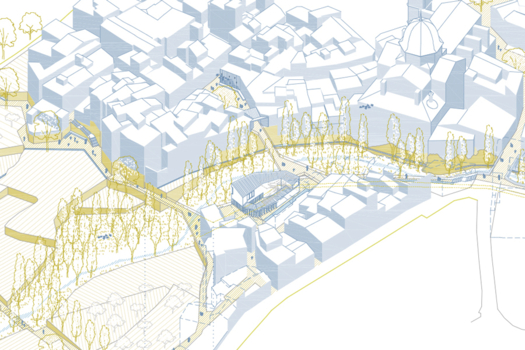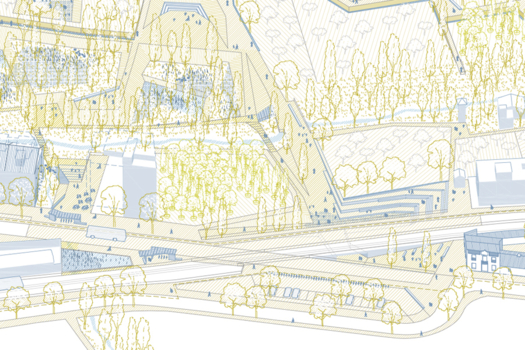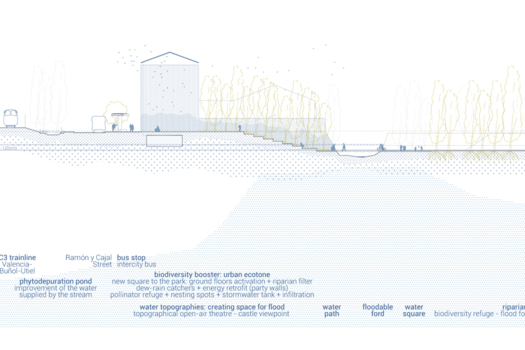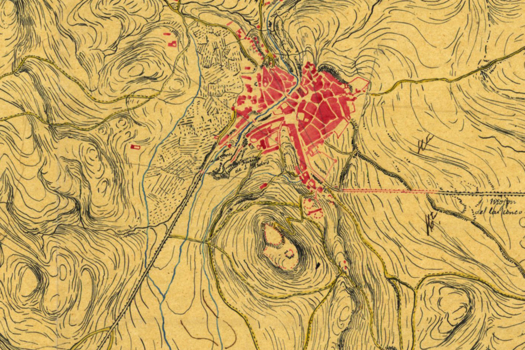BREATHING BACK
Chiva (ES) - Winner

TEAM DATA
Associates: Catalina Salvà Matas (ES) – architect, Santiago Alberca Gandia (ES), Jaume Gil Bou (ES) – students in architecture
info@salvaortin.com
www.salvaortin.com
See the complete listing of portraits here
See the site here
TEAM PORTRAIT
VIDEO (by the team)
INTERVIEW
Click on the images to enlarge
1. How do you define the main issue of your project in relation with the theme “Living Cities Imagining architecture taking care of the milieus”? And in which way do you think your project can contribute to an ecological and/or social evolution?
We envisage the ravine as a "landscape repairing device", as an elongated centrality that weaves together the hydraulic heritage, the existing continuities and the different habitats (including human). In order to imagine an architecture that takes care of the milieus, we shift the point of view from the traditional one of replacement to one of reparation and regeneration of what is already there: the social fabric, the dynamics of water and the patterns of life.
2. How did the issues of your design and the questions raised by the site mutation meet?
We always try that the character of the place gives us the main guidelines for the design. Thus, before the visit, we carried out an extensive analysis covering multiple aspects. Once in Chiva, and incorporating the demands of the agents, some strong ideas emerged. After several meetings, we began to give shape to these ideas by overlapping them on the cartography, always trying not to lose the essence of what the place suggested for the first time.
PROJECT:



We have worked on urban and territorial regeneration projects and from a theoretical/academic perspective, or as collaborators, with the specific issues of the site (we refer to the agro-fluvial regeneration topics). Thus, Chiva is an opportunity for us to materialize our learnings from, e.g., the Celrè river recovering (by EMF), La Lira Theatre public space (by RCR), the holistic Openact approach, as well as the Aranzadi Park or the Bosque Metropolitano by Aldayjover.
SITE:



In all complex projects implementation must be approached from different inter-scale perspectives. It is imperative to reconcile the drafting of the masterplan with an organised process of dissemination and consultation, but also with the development of small interventions that have a direct impact on the life of the citizens. All this must go hand in hand with a well-planned process of ecosystems recovery, understanding their functioning as living entities.
REFERENCES:



We met at the Vallès School of Architecture (UPC), where Catalina is a professor of Urban planning and Architectural projects. She had already won two first prizes at the Europan 14 and 15 editions, a few years before. Santiago and Jaume were doing their Master's Degree in Architecture and Catalina proposed them to apply together for this edition. Immediately, we decided to combine Catalina's background to Santiago and Jaume's desire to work on a real project.
6. How could this prize help you in your professional career?
We are a team made up of architects of different ages and that allows us to take advantage of our knowledge from our previous Europan experiences. On the other hand, each new project is an opportunity to learn from the Europan community and we believe, specifically, that this site provides us with an unrepeatable opportunity to undertake a large and far-reaching project that, without the Europan frame, surely, would be practically inaccessible to young architects.
TEAM IDENTITY
Legal status: The three of us are freelance architects: Catalina Salvà normally share her projects with Hector Ortín and Jaume and Santiago do the same on their part but, for this competition, Catalina, Jaume and Santiago have joined as a team.
Team name: For the current team we don’t have a name yet.
Average age of the associates: 29 years old
Has your team, together or separately, already conceived or implemented some projects and/or won any competition? if so, which ones?
Santiago and Jaume, no, since they have been recently graduated. Catalina has won a first prize in Europan 14 at the Platja de Palma site and is working on the implementation of a small part of this project. She is also winner in Europan 15 at the Palma site and hoping for the implementation process of this project to start. Furthermore, she is working on the development of some projects won in local competitions of public space design mainly located in Catalonia.
WORKS:














